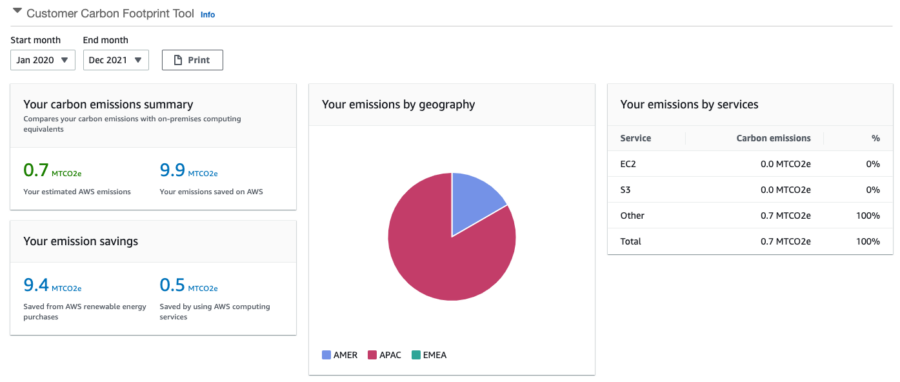Union of FinOps & GreenOps
How we do business and create value is evolving. There is an ever growing focus to make the technologies and practices involved sustainable in an effort for a positive impact overall. Governments, for example, are implementing policies and creating laws for a better and sustainable future. This already is acting as a catalyst in the adoption of sustainability practices. In this blogpost, I will touch on three points: Cloud Sustainability, FinOps, and GreenOps; and how they relate.
Interestingly, ICT forms about 3% of the total global greenhouse emissions. Any step taken to reduce ICT carbon emissions is paramount. This is where the public cloud is becoming a game changer with emphasis on green, renewable energy usage and driving efficiency in their hyper-scale data centers.
Over the years, cloud computing has revolutionised IT space while bringing tools to create solutions of the future. In the next few paragraphs, I will share how cloud migration is helping companies to go green. And also how managers, architects, and engineers can run workloads on cloud in a business sustainable manner.
Cloud Carbon Footprint
Recently, on 1st March 2022, AWS released the Carbon footprint tool which shows the environmental impact workloads have per AWS account. The report is rudimentary and gives insights into total emissions and segregated EC2 and S3 emissions, along with a summary report. Nevertheless, it is a step in the right direction giving a way for the customers to control their scope – 3 carbon footprint.

Example of AWS Customer Carbon Footprint Dashboard.
Over the years, various steps have been taken by industries and governments to reduce scope – 1 and scope – 2 carbon emissions, though scope – 3 carbon emissions have increased many folds due to lack of visibility and the complexity involved to gather such metrics. This small step by AWS is an important step for the cloud community to become carbon aware and take proactive actions to reduce the environmental impact.
Business sustainability
Business Sustainability can be encapsulated under three major pillars. Any practise which has a positive impact on any of these pillars, while not degrading the underlying business objectives, is a step towards sustainability:
- Social Pillar: The business practise which brings positive impact on the society as a whole.
- Environment Pillar: The business practice of continuous innovation to reduce the impact of its produce on the environment.
- Economic Pillar: The business model that can sustain economically while achieving the set business and economic goals.
Public cloud, when applied correctly, will play a major role in making businesses sustainable. The migration of workloads from on-premises to cloud will sow seeds of the circular business model. This could drastically improve sustainability credentials of the businesses by reducing carbon emissions as compared to on-premises by up to 90% and TCO by up to 40%.
The story does not finish just by migrating workloads to Public Cloud, it starts from here. Once the workloads are migrated, it is important to run them on cloud in a sustainable manner.
Cloud Sustainability is the practice to actively reduce costs and the carbon footprint of the workloads running on public cloud. This becomes even more important to achieve the business goals set during the migration to cloud.
Here is the interesting part: reducing the usage of cloud resources will reduce carbon footprint and vice-versa, which has a side effect of reducing the costs: the Eureka Moment.
With the above reasoning, I will coin a term ‘Cloud Sustainability Practice’. This covers best practices for both FinOps and GreenOps. Cloud sustainability, when done right, will not only reduce costs of running workloads on cloud. But also reduce the overall carbon footprint of the said workloads. Thus contributing towards a bigger goal of business sustainability.
Examples cloud sustainability
To give you some more clarity going forward, I will define the two terms for reader’s ease of understanding:
FinOps: Cloud FinOps, as an operating model, can have various facets, though in the current context, FinOps relates to cloud cost and resource optimization actions taken by the cloud user.
GreenOps: Cloud GreenOps, as an operating model, encapsulates all the efforts done to reduce the carbon footprint of the resources running on the cloud by the cloud user. This can be achieved in a few ways such as:
- By optimising the usage of cloud resources such as right-sizing, switching off resources during idle hours
- Choosing a region which utilises renewable energy
- Using/developing energy efficient architecture for the workloads
- Using intelligent and cloud native solutions such as event driven, serverless technologies
- Using compute efficient languages such as C, C++, Rust etc. to reduce usage of compute resources
FinOps has found traction and best practices are being designed in order to control cloud operational costs. On the other hand, GreenOps is quite new but is closely related Cloud resource optimisations. The currently available cost optimization best practices can be utilised in a new light reducing carbon footprint.
Conclusion
I will close by making a request to the public cloud community and it’s vendors to work hand in hand in an effort to reach a goal of net zero carbon footprint. This will require a complete overhaul of the way we migrate to cloud and run our workloads. And we have to think out of the box to use the most efficient and effective sustainable technologies to make an impact on the Scope – 3 emissions with an aim for a greener and better future. My hope is that this blog will inspire the community to take up the available tools. And take a first step towards GreenOps.





